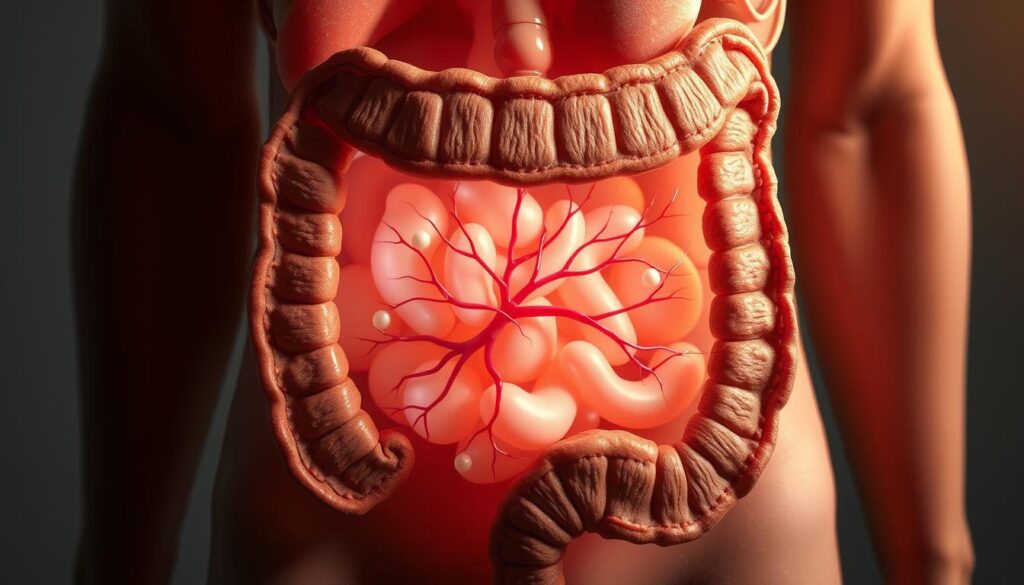Have you ever dismissed low energy or odd cravings as just a rough week what if those moments are actually early clues?
This short guide aims to spot small, meaningful signs before they grow into bigger issues. Many people miss patterns like subtle fatigue, cycle changes, cravings, or bloating because they seem normal.
Recognizing these signals in real time can save time and reduce recovery needs. We will link common symptoms to likely imbalances such as blood sugar shifts thyroid changes, and stress driven inflammation.
The first practical steps are simple: prioritize protein near wake time, pair protein fat-fiber at meals, cut late caffeine, and add strength plus mobility work. Smart labs complete thyroid panels iron studies, vitamin D, B12, and inflammation markers can reveal hidden problems early.
Small, consistent actions often beat dramatic overhauls. Read on to learn clear low risk steps that help restore balance and protect long term health.
Key Takeaways
- Minor symptoms can signal bigger imbalances act early.
- Simple dietary shifts protein at breakfast and balanced meals help quickly.
- Stress often drives symptoms across systems address it intentionally.
- Order targeted labs to surface hidden issues like thyroid or iron problems.
- Add strength, mobility, and mindfulness to support hormones and joints.
- Small, steady steps are more sustainable than drastic fixes.
Listen First: What Warning Signs Really Mean for Your Health Right Now
Small early changes often point to manageable health imbalances before they escalate. Noticing a pattern like afternoon crashes cycle shifts, or constant bloat lets you take simple steps that matter now. This approach treats mild clues as opportunities, not alarms.
Why early, subtle symptoms matter more than crisis-level ones
Early signs are often the most actionable because they reflect reversible imbalances. Catching them means fewer invasive tests and faster fixes. Track timing and frequency to spot trends rather than one-off events.
How stress, sleep, gut, and diet create ripple effects across systems
Stress reshapes cortisol rhythms and can blunt thyroid activity which then worsens blood sugar swings. Poor sleep worsens mood and appetite control over days, making afternoon crashes more likely.
Low stomach acid or rushed meals reduce nutrient absorption and raise inflammation. Eating on the go or skipping a balanced breakfast amplifies swings in energy and hormone signaling.
Practical steps: eat protein-fat-fiber at meals, cut caffeine after 11 a.m. and keep an evening wind down. Track sleep cycle, and stress to pinpoint underlying concerns. If patterns persist despite self care, consider labs for thyroid iron, and glucose to rule out bigger problems.
Energy Red Flags When Fatigue Sleep and Blood Sugar Hijack Your Day
Persistent low energy after a full night can point to specific testable causes rather than just being tired. Identifying when ordinary tiredness crosses into clinical fatigue helps prioritize labs and simple fixes. Track timing, severity, and recovery after rest to spot patterns.
Persistent fatigue despite sleep
Common contributors: low ferritin iron stores , sluggish thyroid conversion, and chronic stress that alters cortisol rhythms.
These factors can sap energy even when sleep duration looks normal. Ask for a full thyroid panel and ferritin when symptoms linger.
Running on coffee and crashing by afternoon
Dependence on caffeine often masks dysglycemia and cortisol shifts. Post meal swings show as energy dips and irritability.
Stabilize with protein within an hour of waking and pair protein fat fiber at meals to blunt afternoon crashes.
Frequent headaches, brain fog, and night-waking
Dehydration low electrolytes, and nutrient deficiencies can cause headaches and fog. Hydrate early and space snacks to support steady blood levels.
Unrefreshing sleep and waking overnight may reflect hormone or nervous system imbalance shift caffeine cutoff earlier and add calming evening routines like yoga or breathing.

| Driver | Common labs | Quick fixes |
|---|---|---|
| Iron deficiency | Ferritin, CBC | Iron-rich meals, retest ferritin |
| Thyroid sluggishness | TSH, free T3, free T4 | Full thyroid panel, review meds |
| Blood sugar dysregulation | Insulin-glucose challenge, fasting glucose | Protein at wake, balanced meals |
| Inflammation nutrients | ESR/CRP, vitamin D, B12 | Hydration, targeted supplements |
Quick routine: hydrate with electrolytes on waking, have protein within an hour, and move lightly to set circadian tone. Track energy across the day to spot when symptoms cluster before pursuing advanced steps.
Your Gut is Talking Bloating, Bowel Changes and Food Reactions
A restless gut often reveals simple fixable imbalances long before major illness appears.
All day bloat often stems from a shifted microbiome, low stomach acid, or eating on the go. Rushed meals and poor chewing leave larger food pieces to ferment which raises gas and discomfort.
Bowel quality and frequency matter more than you think. Aim for a complete daily bowel movement. Hard stools, straining, or urgent diarrhea are signals that digestion and transit need attention.
Cravings can be clues to real needs. Chocolate may hint at low magnesium, red-meat cravings can reflect iron gaps, and strong cheese cravings sometimes relate to fatty acid needs. Frequent sugar urges also point to blood-sugar swings.
When symptoms persist ongoing bloat, pain, sudden weight changes, or visible undigested foods in stool consider testing for gut infections SIBO, or fungal overgrowths.

- Eat fiber rich plants, pair carbs with protein and fat, and add fermented foods as tolerated.
- Hydrate, walk after meals and keep consistent meal times to aid motility and reduce constipation.
- Track foods and timing to connect reactions with patterns and guide targeted fixes.
| Symptom | Possible cause | Quick strategy | When to test |
|---|---|---|---|
| All day bloat | Microbiome imbalance low stomach acid | Slow meals chew well add fermented foods | Persistent >4 weeks |
| Irregular stools | Slow transit low fiber dehydration | Increase fiber, hydrate daily gentle activity | Chronic constipation/diarrhea |
| Targeted cravings | Micronutrient deficiencies, blood-sugar swings | Balance meals test ferritin/Mg | Cravings that don’t stop |
| Pain or weight shifts | SIBO fungal overgrowth infections | Specialist testing and targeted treatment | Severe or unexplained changes |
Hormones Metabolism Cycle Shifts Mood Swings and Stubborn Weight
Subtle alterations in period patterns and mood can flag early hormone and metabolic imbalances. Cycle changes longer, shorter heavier, or unusually light often reflect low progesterone thyroid sluggishness, insulin resistance, or the start of perimenopause.
Track cycles and symptoms with apps and LH strips. Ask for day-3 and mid-luteal labs: estrogen, progesterone, FSH, LH, TSH, free T3, free T4, and anti-TPO to clarify shifts and concerns.
Mood swings that seem to come from nowhere may follow gut inflammation and blood sugar swings. Balance meals and add stress-modulation practices like yoga or breathwork to steady serotonin and mood.
When weight stays stuck despite effort consider insulin resistance and inflammatory barriers to T4-to-T3 conversion. Strength training and realistic nutrition changes support metabolic rate and long term weight goals.
Skin dryness new acne, or hair shedding can point to nutrient deficiencies and hormonal imbalances. Keep a short symptom journal to link cravings, energy, and mood with cycle phases.
- Start with tracking, targeted labs, and small, sustainable habits over weeks.
- Prioritize strength training, protein, and stress reduction to support hormones and health.

Movement Signals Muscle Joints and Breath as Daily Diagnostics
How you move through a single day gives clear clues about muscle and cardiovascular health. Noticeable reductions in strength or easier fatigue are not just normal aging they are data. Track these changes to act early.
Muscle loss and strength: After the 30s, muscle loss can accelerate. Strength training 2–3 times per week and adequate protein help preserve mass and metabolism. Creatine can support high-energy demands in muscle and improve training quality over time.
Joints and mobility: Creaky or cracking joints often reflect mobility deficits and inflammation. Daily mobility drills plus collagen with vitamin C, and anti-inflammatory foods rich in omega-3s and turmeric, provide practical support for connective tissue.
Breath and swelling: Shortness of breath or unexplained leg swelling may indicate cardiovascular strain or anemia. These problems warrant prompt medical evaluation.
Small, consistent movement reveals more than occasional testing.
- Simple plan: strength train 2–3×/week, walk daily, add mobility work each day.
- Track lifts reps, and perceived effort to ensure progressive overload over time.
- Follow an anti-inflammatory eating pattern and consider creatine or collagen under clinician guidance.

| Signal | Likely driver | Quick action |
|---|---|---|
| Reduced strength | Age related loss, low protein | Strength training, add protein |
| Noisy joints | Mobility loss, inflammation | Daily mobility omega-3s |
| Breathless or swollen legs | Cardiac stress, anemia | Seek medical evaluation |
10 Warning Signs Your Body is Begging For Help
When several mild symptoms cluster, they usually trace back to a few common processes.
Read this list as a quick checklist:
- Persistent fatigue and afternoon crashes often reflect unstable blood sugar and stress-driven cortisol patterns.
- Chronic bloat or bowel changes point to gut imbalance low stomach acid, or possible SIBO/fungal issues when ongoing.
- Cycle irregularity and hormone symptoms tender breasts, heavy or irregular flow can signal low progesterone or thyroid sluggishness.
- Mood swings, anxiety, or brain fog commonly tied to glycemic swings gut inflammation, and micronutrient gaps.
- Unexplained weight changes or plateaus may indicate insulin resistance or problems converting T4 to active T3.
- Muscle loss and reduced strength a cue to increase strength work and check protein intake and nutrients.
- Joint pain or noisy joints often linked to mobility loss and inflammation anti-inflammatory steps can help.
- Frequent headaches or sleep disruptions reduce late caffeine and stabilize meals to improve sleep and reduce head pain.
- Cravings that won’t quit can reflect sugar swings or needs for magnesium iron, or omega fats.
- Shortness of breath, swelling, or persistent cough seek prompt evaluation to rule out cardiovascular issues or anemia.
Note: These signs are common and addressable. They often map to insulin resistance, thyroid sluggishness gut infections nutrient deficiencies iron vitamin D, B12 inflammation, or cortisol dysregulation.
Simple, Strategic Steps: Food, Labs, and Habits That Help Today
Begin with simple, repeatable routines that steady energy and clarify next steps. These small moves reduce guesswork and reveal whether further testing or a call with a clinician is needed.
Eat protein early and pair macros
Aim for 25–35g protein within an hour of waking. Then build meals around protein healthy fats, and fiber-rich carbs to cut cravings and steady blood sugar.
Trim late caffeine and protect sleep
Stop caffeine after late morning to preserve sleep pressure and healthy cortisol rhythms.
Ask for targeted labs
| Test | Why it helps |
|---|---|
| Insulin glucose challenge | Assesses blood sugar control and cravings |
| Thyroid panel TSH, free T3, free T4, anti-TPO | Checks metabolism and fatigue drivers |
| Iron studies with ferritin | Detects low iron that causes fatigue |
| Vitamin D, B12, ESR/CRP | Flags deficiencies and inflammation |
Move with purpose and track patterns
Strength train 2–3× weekly, add daily walks, and prioritize mobility drills. Track cycle, sleep, and perceived stress to spot triggers.
Mind-body options: try brief mindfulness, yoga, or acupuncture to reduce stress reactivity.
If bloating or bowel changes persist, test for gut infections, SIBO, or fungal overgrowths. Pair practical food examples Greek yogurt with nuts, eggs and avocado, or a chicken salad to meet macro needs without ultra-processed choices.
Conclusion
Noticing patterns across days helps translate vague symptoms into targeted action.
Early recognition shortens recovery and reduces how much trouble small imbalances cause. Prioritize protein-forward meals, a caffeine cutoff by late morning, consistent sleep, and regular strength plus mobility work to tame fatigue, cravings, and mood shifts.
When patterns persist, pursue focused labs: insulin-glucose challenge full thyroid panel, ferritin/iron studies vitamin D and B12, and ESR/CRP. If gut or bowel issues remain, consider testing for infections, SIBO, or fungal overgrowth.
Small, steady habits beat sporadic fixes. Track sleep, food, and activity to see which shifts move the needle, and pair movement with simple mind practices like brief breathing or yoga to lower stress.
Next step: pick one habit to start today schedule labs this week if symptoms continue, and call a clinician for tailored advice. It matters to act early and keep iterating based on results.





